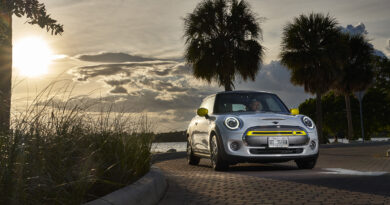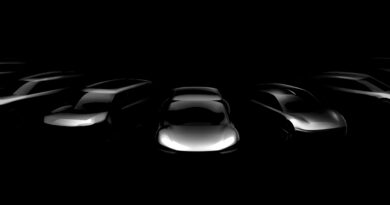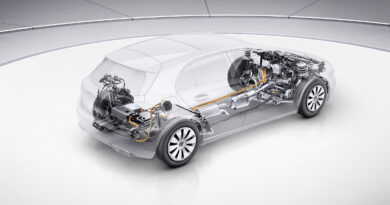Why you should be sceptical about anti-EV stories
It’s not difficult to create a serious-looking study, guaranteed to get mainstream media attention, to falsely cast doubt on the environmental benefits of driving an EV instead of an ICE-powered car.
Recent events in the UK show how easily it can be done. The “Astongate” affair, as it’s being called, stuck to a typical pattern of deception.
Step 1: Manufacture a capable and credible looking source to produce the material.
Step 2: Find a data set that can be made to support an anti-EV position.
Step 3: Send the study to media outlets unlikely to investigate its origins or question its accuracy.
The tale begins only days after Prime Minister Boris Johnson’s November announcement that his Conservative government plans to ban the sale of purely ICE-powered cars from 2030.
Stories appeared in at least three major British newspapers. The headline that ran in The Sunday Times is typical: “Electric cars only greener than petrol after 50,000 miles (almost 80,000km).”
Short, to the point, easy to understand … and, for reasons we’ll get to, rather innacurate.
Secret sources
The source quoted in the articles was an outfit called Clarendon Communications. Its report on decarbonising transport is a professional-looking production.
But it didn’t take long for clean-energy investment consultant and advisor Michael Liebreich to establish that Clarendon Communications was, as he put it in a LinkedIn post, “a sock-puppet PR company”. He also coined the “Astongate” label.
Liebreich found the company appears to have no staff and has only one director. The person working for Clarendon Communications is a woman who shares the same surname and residential address as Aston Martin’s director of corporate affairs. She is a part-time nurse working for the National Health Service who’s married to the Aston Martin executive.
When contacted by The Guardian, Rebecca Stephens told them via email that the info presented in the study had been compiled by the same companies that commissioned it. As well as Aston Martin, backers of the Clarendon Communications report included global car component supplier Bosch, carmakers Honda and McLaren, and other less well-known names.
So, even though its report launched a bunch of anti-EV stories that were read by millions of Brits, Clarendon Communications isn’t independent and lacks in-house expertise.
What isn’t immediately clear is the reason for Aston Martin’s apparent involvement, although some observers have noted that the company has put its widely reported plans to move into EV production on hold until 2025.
Borrowed data
When the data that were the basis for the headlines was analysed by a real expert – someone without an ill-concealed anti-EV agenda – flaws in the method used to calculate the headline-generating results were found.
Unsurprisingly, Clarendon Communications didn’t do the laborious maths themselves. The section of their study that got all the attention, just one paragraph midway through the 20-page document, was actually the work of Volvo.
The Swedish car-maker had published its study a month earlier, in September. It compared the total life-cycle emissions of an ICE-powered XC40 with the Polestar 2, the first EV from Volvo’s new luxury brand.
The study showed that over a 200,000km lifetime the EV was always better for the environment. In other words, the extra emissions involved in building the EV were more than offset by the reduction in emissions over years of driving.
One thing the study was designed to demonstrate was that the lifetime carbon emissions of an EV are hugely affected by the way the electricity used to charge it is generated. So it looked at different electricity production scenarios with widely varying levels of carbon intensity, usually expressed in CO2 -equivalent emitted per kWh produced.
The three figures selected by Volvo represented very low, middling and high levels of electricity carbon intensity; wind power, the European average electricity mix and the global average electricity mix.
With wind power the EV’s carbon footprint was smaller than the comparable ICE-powered vehicle after 50,000km using wind power, compared to 78,000km with average European electricity and 112,000km if using global average power. Clarendon Communications chose to highlight only the middle number in its report.
“We hope that this will help people to fully understand the impact of electric cars, make conscious purchasing decisions, and motivate them to charge renewably,” Volvo said at the time its study was published. It didn’t attract much media attention at the time.
It’s safe to assume that Volvo isn’t pleased by the way Clarendon Communications used its study as the basis for an anti-EV message that did attract a lot of attention.
When Polestar chief executive Thomas Ingenlath was asked to comment, here’s what he told The Guardian: “Electric vehicles are the future and offer a route to carbon neutrality, something fossil-fuelled vehicles can never achieve.”
Volvo’s well-intentioned study is based on a methodology it will use to calculate the carbon footprint of all new Polestar models in the future. The results will be made public, the car maker promises.
But there’s room for improvement in the methodology according to Auke Hoekstra of Eindhoven Technical University in the Netherlands, an acknowledged authority on the life-cycle emissions of EV and ICE cars.
After combing through the densely detailed 38-page Volvo study he found it used a number of assumptions that raised the carbon footprint break-even point of the EV.
Some had the effect of lowering the lifetime emissions of the ICE-powered XC40. These included unrealistically low average fuel consumption and a failure to take into account emissions involved in the production and transport of its fuel.
Other assumptions had the effect of raising the lifetime emissions of the Polestar 2 EV. For example, the study failed to take into account that electricity generation is forecast to become cleaner over the lifetime of an EV bought today.
Hoekstra then applied more realistic and UK-specific assumptions to the comparison of life-cycle carbon footprints of the XC40 and Polestar 2. What he found was that the EV was ahead after only 25,000km.
And the lesson is?
No car company executive or academic expert is going to deny that the emissions associated with the production of an EV are higher than a comparable ICE-powered car. But the size of the difference is important when it comes to calculating the speed and scale of the environmental benefits that an EV delivers.
So there are some questions you should ask the next time you see a story that seems to show that the payback time is slow, the savings meagre, or both.
Does the source of the information have credibility and capability? Are the starting assumptions of their calculations realistic, complete and truly comparable? Did the news organisation presenting the results ask these two questions before publication?
The answer to each of these should be a ‘Yes’. If not, you’re likely looking at another “Astongate”.




